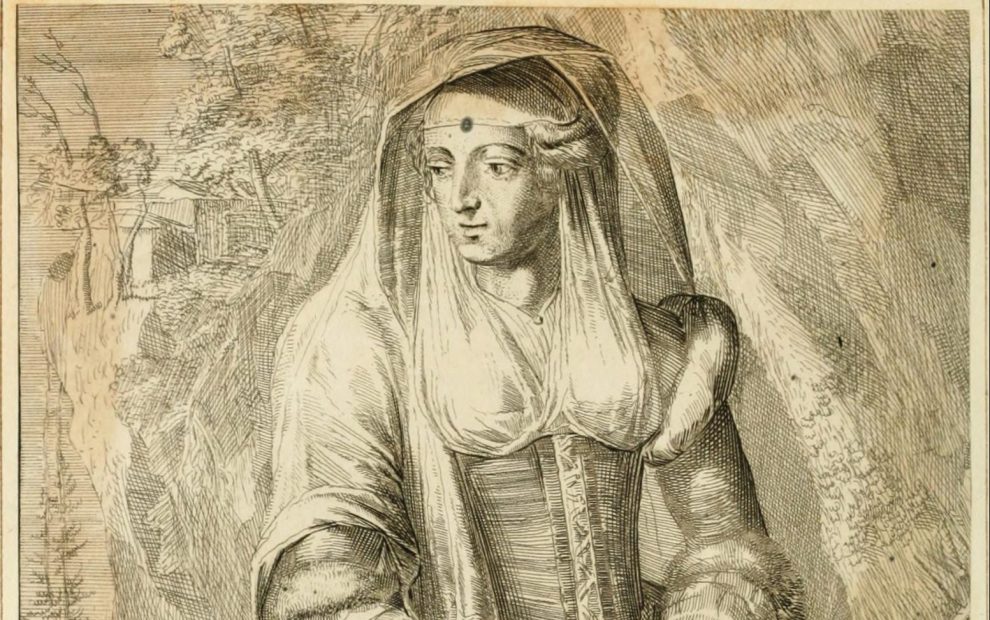“Who do you say I am?” asks Jesus in Luke’s gospel (9:20). His words imply he’s not interested in doctrine or theology. He wants a personal response, not a repetition of the party line.
Female mystics during the Middle Ages were one group who felt free to come up with their own replies. In Jesus, medieval women found someone who was “neither male nor female” (Gal. 3:28).
And yet, isn’t maleness an aspect of Jesus’ identity that’s self-evident? How can there be any room for ambiguity? Somehow, though, the personhood of Jesus drew a new perspective even in the context of medieval patriarchy. Today, queer theology affirms that those medieval women were absolutely right: There’s a larger, more inclusive answer to the question of Jesus’ gender.
Before we react for or against that statement, let’s be sure we understand how queer theology defines itself. To be “queer,” according to definitions queer scholars use, doesn’t necessarily mean to be homosexual. Tyson Pugh, author of Queering Medieval Genres (Palgrave Macmillan), points out that queerness is not a term related to either hetero- or homosexual relationships but rather a concept that totally disrupts our ideas about sexuality. Queer theology, Pugh says, makes room for people and ideas that may not fit into the binary categories of “straight” and “gay.”
Women mystics during the Middle Ages would have had no problem with this. And they were quite comfortable with a gender-bending Jesus. These women answered Jesus’ question— “Who do you say I am?”—in ways that may seem to verge on blasphemy.
When we look back at the Middle Ages, though, historians remind us we shouldn’t use our 21st-century lens. Sexuality was not defined then the same as it is today. Amy Hollywood, in her book Queer Theology (Blackwell), writes that in the Middle Ages, “men and women tended to be perceived as the ends of the same continuum rather than as diametrically opposed to each other as they are today.” The words homosexuality and heterosexuality didn’t even exist until the late 19th century, and these binary concepts would not have matched up with medieval perspectives.
This is why no one had a problem with women mystics describing their experiences in the language of a modern-day bodice-ripper; piercing, penetrating, ravaging, burning, and ecstasy are all words lifted straight from their writings. St. Teresa of Ávila, the great 16th-century doctor of the church, writes that her mystic encounters with Jesus leave her “all on fire,” moaning from the “exceeding sweetness.”
In the 12th century, Hildegard of Bingen equates Jesus with caritas (love, a feminine being). Sometimes Jesus is Hildegard’s male lover wooing her, but more often Hildegard takes the masculine role of a knight pursuing Jesus, her female lover. In the writings of medieval women such as Hildegard, says Hollywood, “gender becomes so radically fluid that it is not clear what kind of sexuality—within the heterosexual/homosexual dichotomy readily available to modern readers—is being . . . employed to evoke the relationship between humans and the divine.”
Hadewijch, a 13th-century mystic, also names Jesus with the feminine word for love. “He who wishes to serve love,” she writes, referring to her own soul in relationship with Jesus, “must surrender himself into her power.” Then, later in the same poem, she refers to herself as a woman wooed by love, slain by “her touch.” In another poem, Hadewijch writes, “You who can conquer all with wonder! Conquer me, so I may conquer you.”
In a similar way, Mechthild of Magdeburg, also in the 13th century, writes these confusing lines, referring to her relationship with Jesus: “He surrenders himself to her, and she surrenders himself to her.” The boundaries between male and female have become permeable, allowing all the variations of human sexuality to meld into a fluid unity.
In her book Power, Gender, and Christian Mysticism (Cambridge University Press), historian Grace Jantzen writes that women mystics describe “direct, highly charged, passionate encounters between Christ and the writer. The sexuality is explicit.” These medieval women claimed the eroticism of their own bodies as a form of spiritual power.
Not all medieval mystics thought of Jesus as a lover—but they still engaged in confusing gender bending, where roles shifted, blended, and merged. Margery of Kempe in 14th-century England identifies with Jesus as being like her in his womanhood, but she also says she gives birth to him as his mother. Her contemporary, the woman mystic Julian of Norwich, describes Jesus’ blood on the cross as resembling menstrual blood; Jesus is a woman like herself. She also insists he is the embodiment of all true motherhood, and she refers to him throughout her writing as “our Mother.”
During the Middle Ages, far more women than men were mystics. This may have been because women identified with the physicality of Jesus’ life, for they too suffered and bled, birthed and nourished, and often died in the process. Their bodies, the very part of them men said was corrupt, gave them entryway into spiritual intimacy with Christ. Intense mystical experiences also freed women from the rules and roles the patriarchy imposed. Their mysticism did not lift them into some higher noncorporeal plane but, instead, grounded the spiritual world in their own experiences as women. Mysticism gave women’s voices back to them. On the grounds of this spiritual authority, women could even write books.
Claiming this authority was tricky, though. According to Jean Gerson, a prominent 14th-century philosopher and scholar, “The female sex is forbidden on apostolic authority to teach in public, that is either by word of mouth or writing. . . . All women’s teaching is to be held suspect . . . because they are easily seduced and determined seducers.” But if women mystics spoke with Jesus’ voice, then men could accept their messages as coming straight from God. In that case, women would be like empty straws through which the divine could flow.
“I am a poor little woman,” writes Mechthild, “but I write this book out of God’s heart and mouth.” Hildegard—a polymath author, artist, musician, botanist, astronomer, and physician—refers to herself as “a weak and fragile rib.” Julian of Norwich, whose theology is as brilliant and relevant today as it was in the 14th century, claims she is “ignorant, weak, and frail.” Only by apologizing for themselves, by casting themselves as invisible and unworthy carriers of Christ’s message, could these women be taken seriously (and hopefully avoid the mortal danger of being condemned as heretics).
And yet, despite the need for subterfuge and apology, medieval women proclaimed the holiness of their own bodies. When they looked at Jesus, they saw someone outside the patriarchy, someone who understood them and affirmed them spiritually but also physically. Through Jesus, they claimed their sexuality in a space where no human male could enter. “You are me,” these women said to Jesus, “and I am you. We are one.”
Christ has been defined in many ways over the centuries and around the world—but the real question has always been: What is your relationship with Jesus? If we expand our answers to this question, looking beyond our cultural assumptions, we too, like medieval women, may find entryway into a deeper relationship with Christ.
Then, far more than those medieval women, we have the power to pull our understanding of the incarnation out beyond our own souls, into our society. Our answers to Jesus’ question can stretch beyond gender, beyond race, beyond creed. Relationship with a queer Jesus might even smash the barriers of hate and fear we’ve built between us.
So—who do you say Jesus is?
This article also appears in the January 2024 issue of U.S. Catholic (Vol. 89, No. 1, pages 16-18). Click here to subscribe to the magazine.
Image: Hildegard of Bingen. Public domain.













Add comment